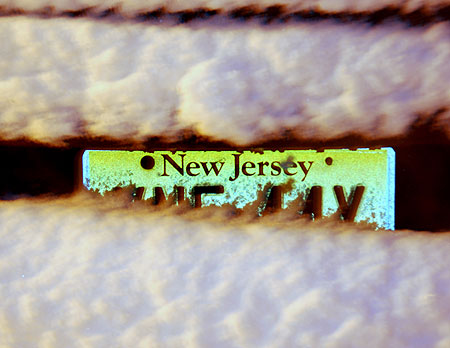Winterize Your Ride Before The Cold Winter Winds Blow In
 Old Man Winter is preparing to knock, with the hectic holiday season right behind him. The editors of shopautoweek.com have compiled helpful tips to get your ride ready for the busy cold months.
Old Man Winter is preparing to knock, with the hectic holiday season right behind him. The editors of shopautoweek.com have compiled helpful tips to get your ride ready for the busy cold months.
"The good thing about winterizing your vehicle is that it involves mostly inexpensive, preventative maintenance," said shopautoweek.com Associate Editor Angie Fisher. "A simple fix like changing worn wiper blades now means you won't have to scramble if that first snowfall comes as a surprise."
Industry experts recommend drivers also take a look at the following areas:
- Battery: Mopar advises the extreme heat of the summer months can reduce battery life, resulting in batteries that then fail in high-demand winter months. AC Delco tells consumers to watch for corrosion on cables and posts and seek help from a professional if these contact points require cleaning.
- Tires: Changing temperatures can alter tire pressure. Make sure all tires are filled to their recommended tire pressure. Also check for tread wear. Tires play a huge role in how well your car handles in sloppy winter driving conditions.
- Oil and other fluids: Top off all fluids that have run low. Windshield-washer fluid is used frequently in winter driving, so keep a spare gallon in your trunk to ensure you will always have a clear view of the road. Check the oil, and change it if the time is right.
- Headlamps and tail lamps: So you've completed a pre-winter inspection of your car, but the guy behind you probably didn't. Check your lights to make sure you are as visible as possible to other drivers. Even better, Sylvania says swapping out dull bulbs is easy.
There are times though when even the best preventative measures won't do, and you find yourself stuck in the snow. Here are some tips to keep in mind before you're sidelined:
- Be prepared for emergencies – keep a blanket, boots, an extra pair of gloves and a flashlight in the trunk of your car.
- Be sure your car has a communications lifeline in case of emergency.
- Understand how anti-lock brakes work. Do not pump your brakes. Instead, press firmly on the brake pedal when braking and let the system do the work to stop your car.
- Traction mats, kitty litter, or sand can be used to improve traction on icy surfaces.
- Keep an ice and snow scraper with you at all times and be sure to stow it safely when driving.
 Old Man Winter is preparing to knock, with the hectic holiday season right behind him. The editors of shopautoweek.com have compiled helpful tips to get your ride ready for the busy cold months.
Old Man Winter is preparing to knock, with the hectic holiday season right behind him. The editors of shopautoweek.com have compiled helpful tips to get your ride ready for the busy cold months.